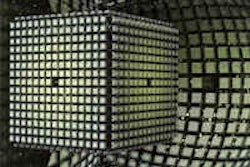
It's a hard, harsh, modern world in which to practice radiology. Not only are we now slavishly dependent on the whims of a truculent PACS, but on top of the background maelstrom of draconian "efficiency savings" (i.e., cuts), we are beholden to increasingly impossible cancer targets -- at least in the U.K. Lack of waiting times and rapidity of reporting are the two primary quality metrics. The radiological mottos of appropriateness and justification have been subsumed by a market-trader mentality.
With such a focus on quick turnaround and low costs, quality inevitably suffers. And no more so than in the radiological report. I'm not referring to the garbled medical English of a foreign teleradiologist (don't get me started). More that, if the reporting target clock is ticking, you want to merely dictate a brief, technically accurate report and move on. Your mind is on productivity.
 Dr. Paul McCoubrie is a consultant radiologist at Southmead Hospital in Bristol, U.K.
Dr. Paul McCoubrie is a consultant radiologist at Southmead Hospital in Bristol, U.K.Written reports have been the medium of the radiologist since the dawn of the specialty. Their clarity and accuracy are paramount, especially now that radiology is complex and yet so central to clinical practice. We hope the requesting clinician reads the subsequent report, but sadly this isn't assured. They claim that they are "too busy" to read through all these reports. With the modern-day investigational "chocolate box" open wide to anyone with a pen or computer password, it must be hard to keep track of precisely how many "chocolates" you have helped yourself to. So we get requests to, "Please highlight unexpected findings" -- the subtext being, "Please tell me which reports to read." It must only be a question of time until a diktat demands that radiological investigations revealing unexpected cancer must not only be telephoned to the requesting doctor, then faxed to the general practitioner (GP), but also delivered in person to the appropriate nurse specialist on a silver salver. But I digress.
There are agreed rules for radiological reports that I have no argument with: Always answer the clinical question, be concise, include relative negatives, avoid vague quantifiers, summarize a long report, and so on and so forth. However, there is an odious move in certain circles toward standardized reports, occasionally using a proforma or (God help us) a tick box approach. This seems to emanate more from across the North Atlantic where it seems the blandness of language and subsequent length of the differential diagnosis are worshipped over and above their clinical utility.
And bizarrely, these tedious lists of normal and nearly normal organs with a lengthy differential diagnosis, but no opinion, seem not only acceptable but often preferred to conventional modern reports. I suspect the problem here is that modern reports may be scientifically accurate but have lost their "art" -- i.e., their style, charm, and readability.
When I was a young radiologist, we would sit at the knees of particularly venerable consultants, listening to loquacious descriptions of otherwise bland-seeming plain films. His (always a he) hands were a blur as the films danced across the lightbox whilst delivering a radiological soliloquy of brief, yet lavish, verbal pastiches. It was almost as if he were trying to entice the Dictaphone to bed with the most charming and suave reports ever to hit magnetic tape. Later, in the typing pool, the secretary transcribing his reports would smile unconsciously at the graceful language flowing from ear to fingertip.
Now this kind of style is refined over decades and tens of thousands of films. But it hasn't stopped me mulling over why such reports are so attractive and pondering on how to emulate my radiological heroes. On reflection, I have come to the conclusion that it is not only the practiced, flowing language, but also the sparing use of humor that makes such a reporting style so enviable. More specifically, I would contend it is the use of "whimsy," defined as a quaint or fanciful quality.
Why whimsy? Overt attempts at humor in a radiological report may entertain, but could cause offence. For instance, my GP father recalls a local radiologist some decades back issuing occasional seasonal reports that might read, "Normal heart and lungs. And a happy Christmas to all our readers." I imagine this would be frowned upon these days. But lightly peppering a report with playful comments of a gentlemanly nature will enrich a report and not offend.
Although an informal tone may make reports more readable, it is all too easy to slip into a conversational tone, thereby artificially elongating reports. Not only do these reports take longer to authorize, but I would imagine that clinicians are loath to wade through long swathes of semiradiological pseudo-Socratic monologue.
Enticing as it may seem, one should never be offensive to the patient or use the patient as a butt of the humor. Not even remotely. We shouldn't patronize them either. It will only get you in trouble.
Although you may be tempted to say, "I wish Mrs. Lard had abstained from yet another fried breakfast just prior to heaving her fatty liver onto my ultrasound couch as it was difficult enough to identify the pancreas through the rolls of blubber anyway," I would counsel against this approach. Apparently, it is a sign of being unprofessional or even dysfunctional. A sonographer may preface their report, "Technically difficult scan," whereas the whimsical radiologist may say, "Distinctly challenging scan. Might I suggest that Mrs. Lard's habitus makes her fundamentally unsuited to upper abdominal ultrasound?"
Not everyone is going to agree that there is role for humor in radiological reports. And fair enough, vive le difference and all that. Plus, I've met some pretty mirthless radiological types who wouldn't know their ulnar epiphysis from a thrombosed hemorrhoid. Lord knows what the result would be if they tried their hand at a whimsical report.
Perhaps the best bit of adopting a faintly whimsical style is that clinicians spontaneously mention that they "like your reports." Who knows? The sparing use of capricious observations in a report may even entice the clinician to read it through and not just skip to the conclusion. Moreover, it might raise a dry smile and even a chuckle. And in modern radiological practice, there definitely aren't enough smiles and we are seriously short on chuckles.
Dr. Paul McCoubrie is a consultant radiologist at Southmead Hospital in Bristol, U.K.
The comments and observations expressed herein do not necessarily reflect the opinions of AuntMinnieEurope.com, nor should they be construed as an endorsement or admonishment of any particular vendor, analyst, industry consultant, or consulting group.



















